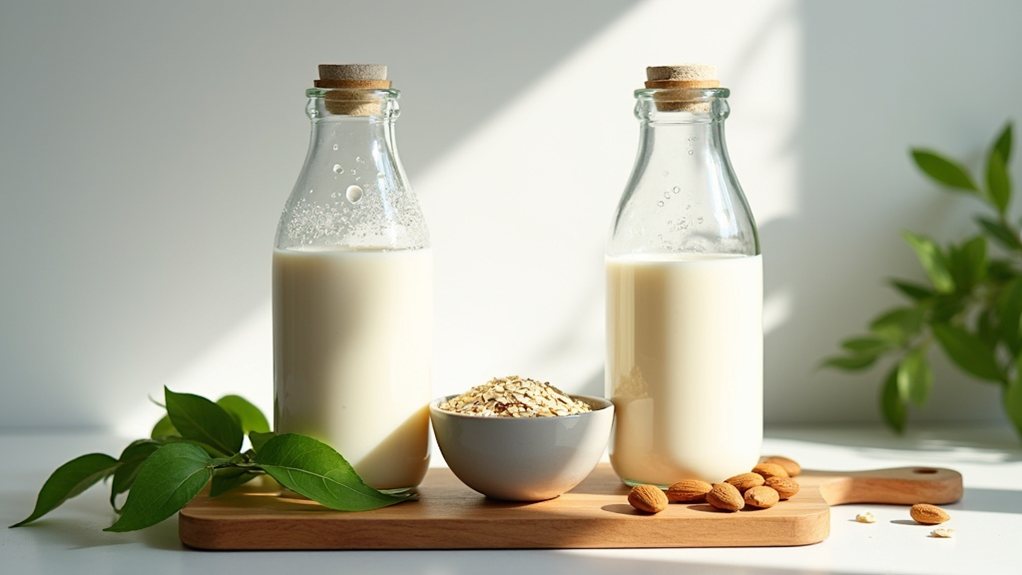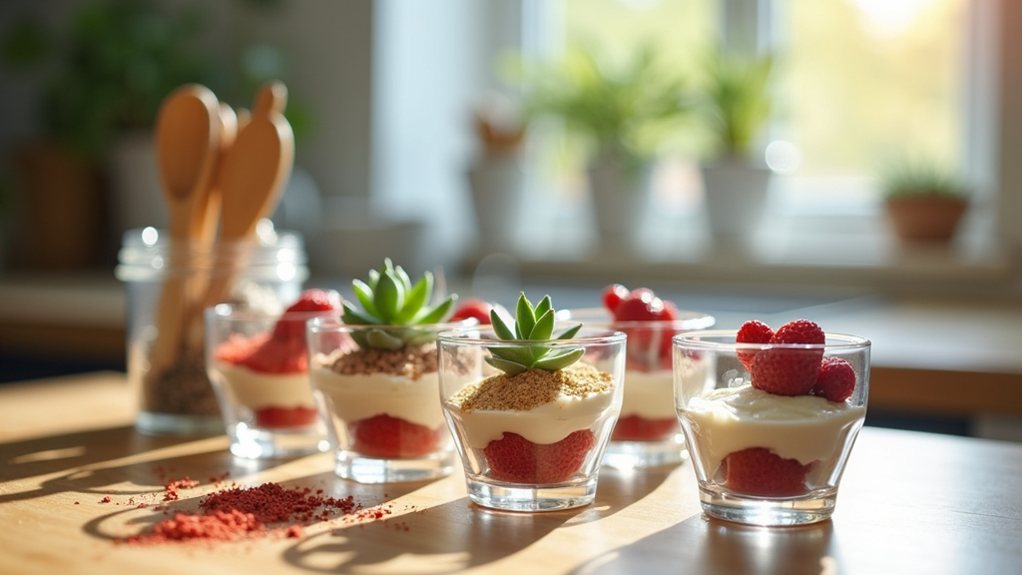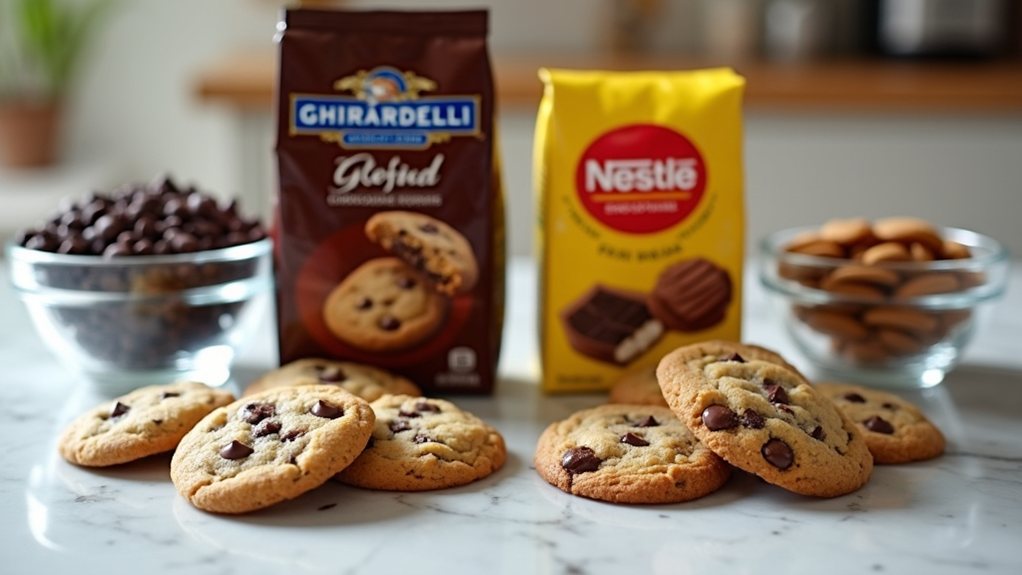Plant-based milk alternatives have surged in popularity, with almond and oat milk leading the pack. Health-conscious consumers often reach for almond milk, prizing its low calorie count and vitamin E content. However, oat milk quietly outperforms in protein and fiber while demanding considerably less water to produce. The environmental impact difference is striking, as almond cultivation requires up to six times more water than oats. These nutritional and ecological trade-offs present consumers with a choice that extends beyond the breakfast table.
Comparing Oat and Almond Milk: Nutrition and Impact

In relation to plant-based milk alternatives, consumers often find themselves torn between the creamy texture of oat milk and the light nuttiness of almond milk. Both options have gained tremendous popularity as dairy-free substitutes, offering their own unique nutritional profiles and environmental impacts that merit consideration for anyone looking to make a conscious choice.
The nutritional landscape between these two plant milks reveals notable differences. Oat milk delivers about 120 calories per cup with approximately 3 grams of protein and 2 grams of fiber, making it considerably more calorie-dense than almond milk, which contains just 30 calories per cup. This caloric distinction means almond milk often appeals to those watching their weight or following low-carbohydrate diets, while oat milk provides more substantial nutrition for those seeking additional protein and fiber. Similar to how pasta filata technique creates the distinctive texture in cheeses like mozzarella, the production methods for these plant milks significantly influence their nutritional composition.
Health benefits vary between the two options, with oat milk supporting heart health through its fiber content, and almond milk offering vitamin E that strengthens immune function and skin health. Both milks typically receive fortification with calcium and vitamins D and A, making them comparable to dairy milk in these vital nutrients, though the specific fortification varies by brand. Health experts suggest that instead of obsessing over which plant milk is superior, focus should be placed on overall health choices within your complete dietary pattern.
Allergy considerations play an important role in determining which milk suits individual needs. People with tree nut allergies must avoid almond milk entirely, while those with gluten sensitivities should seek certified gluten-free oat milk to prevent adverse reactions.
From an environmental perspective, the verdict might surprise many consumers. Despite almond milk’s reputation for lightness, its production demands considerably more water than oat milk, giving oat milk the edge in sustainability. Almond milk emerged as a plant-based option since the Middle Ages, giving it historical precedence over oat milk which was only developed in the 1990s. Oat cultivation generally requires less intensive irrigation and produces a smaller carbon footprint, making it the unexpected champion of eco-friendly plant milks. Similar to returning grocery items to their proper places, making responsible plant milk choices demonstrates thoughtful consumer behavior that benefits both businesses and the environment.
In culinary applications, oat milk’s natural creaminess makes it ideal for coffee drinks and baking, while almond milk’s distinctive flavor improves smoothies and lighter preparations.
The choice ultimately depends on individual health needs, environmental concerns, and culinary preferences, with each offering unique advantages in the growing landscape of plant-based options.









